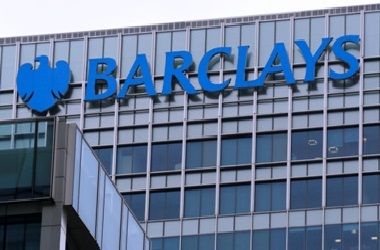Barclays has signed an agreement with JP Morgan to transfer a portion of its legacy derivatives portfolio to the US bank as part of a wider strategy to run down assets at its non-core unit.
The deal, which is pending approval from counterparties on the affected trades, is being touted by the UK bank as an “important milestone” in a three-year plan to reduce risk-weighted assets in its legacy portfolio.
Barclays declined to provide details on the nature or volume of transactions set to be transferred.
However, but sources familiar with the agreement said thatthe transactions are all plain vanilla interest rate swaps, adding that the book is primarily collateralised and so will have no material impact on JP Morgan’s capital requirements.
Barclays has noted that many of the assets in its non-core unit remain high quality. The move away from the core bank reflects a streamlining of its investment banking operations.
For those banks in better shape from a capital and leverage perspective, legacy derivatives assets can represent an attractive source of returns against a backdrop of low and negative yields. Sources noted that the benefits and returns associated with Barclays’ legacy swaps portfolio significantly outweigh any capital hit that JP Morgan will incur as a result of taking the trades onto its books.
In addition, the deal provides the US bank with access to a broader range of new clients within the rates business.
The size of the transfer is to be determined by take-up from affected counterparties, though is believed to be very significant in size, such that only a handful of large rates houses could consider taking on board.
Barclays is in the process of contacting clients as it seeks to novate trades to JP Morgan and it is hoped that a large number will agree. For clients, the decision may depend on whether they are able to face the US bank as a counterparty and whether they have the capacity to increase exposure to JP Morgan without breeching risk concentration constraints in their bilateral portfolios.
Execution of the transfer will take place gradually, with completion targeted for the end of 2016.
To hit its RWA target for the non-core unit of £20bn by the end of 2017, Barclays has another £35bn of disposals to achieve. RWAs in the non-core unit currently stand at £55bn, down from £115bn when a total of £500bn of assets were transferred in 2014.
Last year, Moody’s warned five European banks, including Barclays, that their credit ratings could be affected by tail risks associated with their non-core units. The ratings agency estimated that the banks collectively booked US$52bn of losses linked to those assets since 2012 – more than half of the profits earned during that period,
In a statement relating to the transfer, Barclays reiterated that the transactions came only from the non-core unit and that the bank remains committed to its “top-tier macro franchise”.
The macro business was created as part of the broad restructuring in 2014, bringing together trading and distribution across rates, foreign exchange and commodities in an attempt to streamline operations in a business that has been battered by a structural and cyclical decline.
